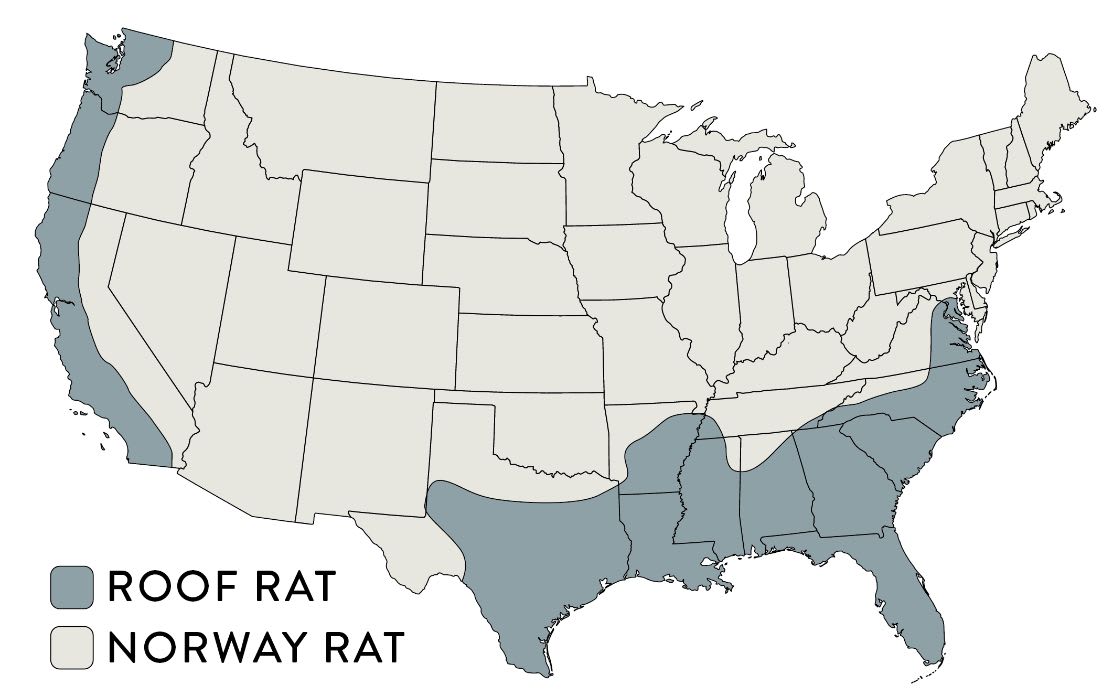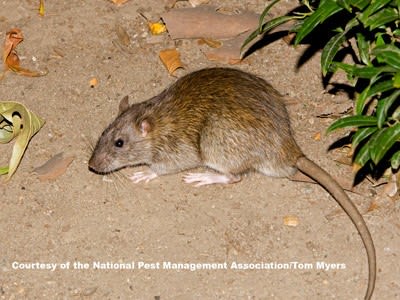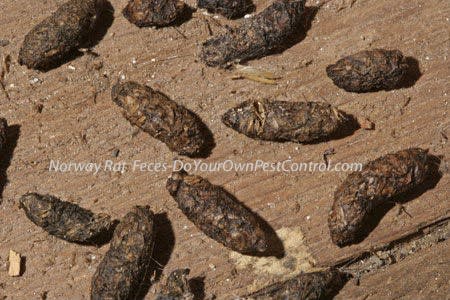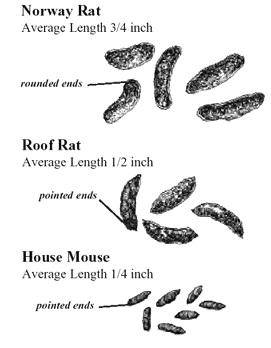
How To Get Rid Of Norway Rats
Identify a Norway Rat and How to get rid of Norway Rats
The Norway Rat (Rattus norvegicus) is also called a sewer rat, brown rat, water rat, wharf rat, and gray rat. It is found in all the states in the USA, but the Roof Rat is more dominant in coastal states.

Identification and Inspection

The Norway Rat is larger and more aggressive than the Roof Rat. As an adult, the Norway Rat can weigh between 12-16 oz. with a body length of 6-8 inches long. The nose is blunt with small ears and small eyes. Its fur is shaggy and coarse with variations in colors. The tail of the Norway rat is shorter than the head and body combined and scale-like.
The standard method of identifying the difference between a Norway Rat and Roof Rat is pulling their tail back over the body. The tail of a Norway Rat can not reach its head.
Norway Rat Inspection


Their droppings are usually shiny black but may vary according to their diets. The Norway Rat droppings are 1/4 to 1/2 inch in length. The droppings are capsule-shaped and have blunt ends.
- Norway Rats and Roof Rats will leave a hind foot track of about 3/4-1 inch, where a mouse's track measures 3/8 of an inch or less.
- Norway Rats will leave a mark as they drag their tails between their feet. Using unscented baby powder or flour can be dusted in areas of suspected activity. Lightly use the powder in these areas.
- Norway Rats can leave a gnarled hole about 2 inches in diameter. The holes have rough edges. Their preference is to gnaw on wood but will gnaw on electrical wiring, causing damage.
- Rat burrows can be found along with the foundations or beneath rubbish and shrubbery; if the burrow is active, it usually clear of vegetation. Rat runways are smooth and well packed. Indoors, these runways are free of dust and dirt.
Norway Rat's Diet
Norway Rats will eat a lot of types of food but prefer proteins and carbohydrates. Food items from house-hold garbage can provide these rats with a balanced diet. They will eat meats, fish, cereal grains, livestock feed, and fresh fruits. Norway Rats that live outside may feed outside or enter buildings daily for food and return to their outside habitat burrows after feeding. These rats will kill and eat various small reptiles, mammals, birds, and insects.
- Unlike mice, they need water for survival. They require 1/2-1 ounce of water daily if they feed on dry foods. If they are in and around buildings, they can get their water from toilets, sinks, water off condensing utility pipes, and rain puddles.
Burrows
The Norway Rat prefers to live in underground tunnels or burrows. New rat populations have short (between 12-20 inches long) burrows, but as the population grows and mature, the burrows are enlarged. They can have many burrows interconnected, forming a network of underground tunnels. These ground burrows usually have one central opening that they use for an entrance or exit and a couple of holes used for escaping. Several distinct rat families may use the same runway and the same food and water sources, sharing an extensive burrow system. As the rat population increases and food/water sources are limited, fighting will begin as they defend territories. These fights will result in dominant rats that are the first to feed. Rats prefer to feed at night and are mostly nocturnal. The subordinate rats are forced to reside in a section of the burrow from the food/water sources. These subordinate rats will feed and be active when the primary dominant rats are not active. That is why you may see rats during the day time, which indicates a large population.
- When using rodent baits in burrows and outside, the dominant rats are often killed first, with bait shyness developing in a few "smart" rats. As with other rats, Norway rats are suspicious of changes in the environment. This suspicion makes baiting or trapping a little tricky. It may take a few days of undisturbed bait or traps to be trusted enough for them to approach them. See rat baiting tips while using bait stations.
Nests and Territories
They can be found near food sources such as barns, granaries, silos, and livestock if found on farms. If found in urban areas, they can be found in yards or any available ground space. In most cases, they will be found in underground tunnels but may also live inside buildings their whole lives. Norway Rats can enter homes during the night, seeking food, then return to burrows. If found inside, Norway Rats usually are found nesting in crawl spaces and basements. Still, they may be found in attics and ceiling areas if the population is large.
- These rats range from 50-150 feet from their nests. Under duress, these rats can travel up to 300 feet daily to obtain food and water.
- The Norway Rat's nest may be built from a soft material such as paper or grass. If necessary, the Norway rat will climb a structure to enter a building. The Norway rat is also an excellent swimmer.
- Expect most Norway rat activity during the night. Their peak times are either just before dawn or at dusk. If their population is large or if they are disturbed, you can detect activity during the day.
Key Takeaway
Norway Rats prefer living in underground burrows. These can often be found immediately surrounding infested buildings. Locating and treating burrows is crucial to eliminating Norway Rats.
Written by our resident pest control expert Ken Martin.






